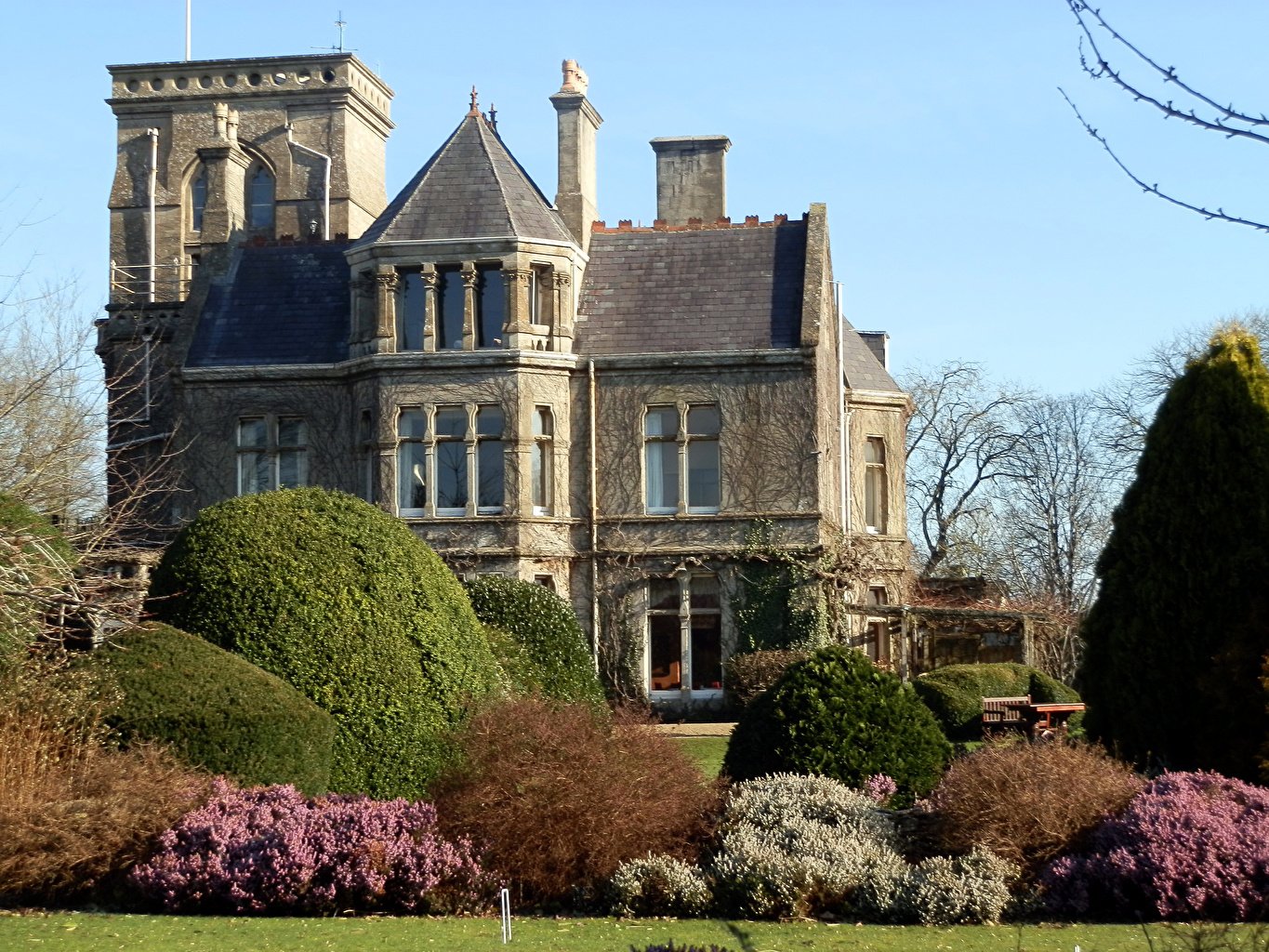#11090. Neo-Gothic Manor: Majestic Stone Façade with Asymmetrical Composition and Rich Architectural Detailing

The photograph showcases a magnificent Neo-Gothic Victorian manor, likely constructed in the second half of the 19th century. The façade exemplifies characteristic features of Neo-Gothic architecture with elements of Tudor style. The mansion is built from natural gray stone, giving it a monumental and aristocratic appearance.
The architectural composition is asymmetrical, which is typical for Neo-Gothic structures. The façade features a variety of vertical elements: a tower with crenellated parapet on the left, an octagonal bay window in the central section topped with a pointed roof turret, and several chimneys of varying heights. The windows showcase distinctive Gothic styling with stone casings and cross-mullions. Particularly expressive are the tall narrow windows in the tower section and the decorative columns of the open gallery on the second floor.
The treatment of textures and materials deserves special attention: the contrast between smooth dressed stone used for architectural details and the rougher masonry of the main walls. The façade is enriched with fine details — cornices, brackets, and decorative stone carvings — creating a rich interplay of light and shadow.
The manor is surrounded by a beautifully designed garden with geometrically trimmed shrubs (topiaries), flowering plants, and an open lawn, typical of English landscape design. Climbing plants on the house walls organically connect the architecture with the surrounding landscape.
For application in modern private home design, one could borrow elements such as: asymmetrical façade composition to create a dynamic appearance; use of natural stone or its imitation for finishing; vertical accents in the form of bay windows or turrets; decorative window framing; contrasting combination of different textures in finishing materials; and integration of the building into landscape design through greenery.